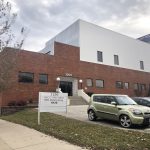It’s not that easy being green… It’s that easy saying you’re green
It’s not that easy being green
Having to spend each day the color of the leaves
When I think it could be nicer being red, or yellow or gold
Or something much more colorful like that-Kermit the Frog
Bein’ green might not be that easy for Kemit, but for some development projects it seems all to easy “bein’ green.” In fact it seems easy to be Silver, Gold, or even Platinum, “Green,” or in this case LEED certified.
LEED certification takes into account a number of green practices and technologies. These might include the re-use of materials, utilizing renewable energy sources, the use of energy efficient windows and lighting, weatherization, grey water systems, and numerous other items all of which are a great step towards being green. But missing from LEED certification seems to be a key component of actually bein’ green.
Transportation. A site can fail any true measure of bein’ “green” if it requires automobile use to access or is for the express purpose of serving the automobile. Be it the emissions, heavy metals and toxins auto’s spread, oil consumption, storm water impacts due to land use demanded by automobile use, the automobile brings with it negative environmental impacts that need to be taken into account.
Here in Milwaukee, the recently completed parking garage at The Brewery project received LEED Gold Certification, because it used LED lighting and recycled building debris allowing it to receive enough points to meet the standard. No question, it is good the project used these methods and incorporated energy efficient features, but the the purpose of a parking garage should disqualify, or at least severely handicap it, in its ability to receive LEED certification. The building’s primary use is to support, essentially encourage, automobile use, an inherently anti-green function. The LEED standards are a start and a step in the right direction, but it needs continual refinement and improvement if it wants to truly be green.




















Dave,
The first category of the LEED rating system is “Sustainable Sites.”
However, I agree that the LEED rating system is not without flaws.
Being in the design profession, the benefit of LEED is that it helps Architects to do the best with what they are given, as Architects don’t have the luxury of picking their buildings site. In addition it recognizes strides towards sustainability and establishes metrics which can be used as precedents for future projects.
The real problem is the culture we live in which is founded on the notion that all buildings are accessed by automobiles.
@Mitch I’m glad we have LEED, but it seems to allow for “greenwashed” sites to slip through.
It’s like the suburban home that looks like a garage with a living space attached. Every building development I’ve followed on the East Side from the Downer Ave development or Mercy’s application to build workforce housing is hung up because of Parking. Reasonable objections were made to the height of Mercy’s plans for the US Bank site on Farwell. The problem was not the number of living units but the need to provide not only the public parking they were taking away, but the parking for their residents. This space will cost, depending on whether it’s above ground or not, 20 to 30 thousand dollars per spot and occupy three floors. The parking lot they are replacing has less than a 25% occupancy rate.
The ludicrous example of finding out after the building housing PIzza Man was destroyed by fire, that a replacement building of similar use was impossible to build because of Bank requirements for adequate parking. The business in that building did just fine for year without parking.
Automobiles are at some point have to be relegated to best use and not primary solutions. In an Urban environment they are to expensive and cause more problems than they solve, pollution being the biggest and land use being the most costly.
The answer is public transit, but many of our government officials with the notable exception of Mayor Tom Barrett and Supervisor Chris Larson don’t seem to be able to get their minds around that concept.
The real problems are these realities: vehicular transport is the only way to get around quickly on demand and control who you come into contact with, and a lot of people can and will pay for the privilege. In areas where there are a lot of people who don’t want to come into contact with a lot of other people and places, cars are seen as an existential necessity.
What seems really counterintuitive is how densely populated urban centers with good public transit and a cohesive social contract (unfortunately enabled for only certain groups by segregation) emptied out into suburban areas without good (or any) public transit or sensible, dense development.
I guess you could hypothesize a new sense of distrust and guardedness prevailed, or this is just what you get from a lack of good planning. I’d guess the latter, because small, relatively prosperous cities that have no real history of segregation, white flight, etc. have also been built in the car-friendly but anti-social, anti-pedestrian, anti-bike fashion. I always interpret that as a sign of people not trusting each other, but maybe they just see streets as access points for sewers and cars, whereas people only get together in buildings. Either way, there is a significant level of national sociopathy induced by conditioning or traumatic experience that seems to explain the situation, and that has never really been raised to the level of deliberate policy even though it’s kind of an “everybody knows” situation.
I agree with Mitch. LEED does address site sustainability and transportation access. But the Sustainable Sites category should be weighted much more heavily in project evaluation and portions of it should become prerequisites rather than credits.
LEED has been responsive to criticism and is continually adjusted and improved, so you’ve got to hand it to them for that. The other thing to keep in mind is that even if some certified buildings aren’t uber green, they are at least a significant improvement over their conventionally built counterparts.
@Joe It is true, they are better than had they not been certified but the problem becomes when people see these and think oh that’s environmentally friends, when it really isn’t. I like the idea of prereqs as opposed to credits, or maybe negative credits that would have to be overcome?
Also I do recognize that LEED has been improved, but it has a ways to go.
JCI’s goin for the Platinum certification for their corporate headquarters. I believe they would be the first multi-campus or multi-building corporate headquarters to receive this certification if they get it. Pretty cool.
Two kinds of people in our world:
Mr. Walker and Mr, Wheeler
http://www.youtube.com/watch?v=mZAZ_xu0DCg